The beating heart of the French table
I grew up in France, sampled baguettes in different countries but let’s be honest: there is only one true baguette. The “French stick” found in other countries looks familiar enough, but if you think it compares, you’re in for a rude awakening. No matter how much time passes, stepping into a French bakery is an event. The scent, the warmth, the golden loaves are unique to France. The first bite, all crunch and comfort, reminds you why the baguette is no ordinary bread.
The baguette is an institution, a national symbol, the beating heart of the French table. From the corner boulangerie to the Elysée Palace, from quick lunches by the Seine to laugh-filled family suppers, the baguette is at once background and star. But what really lies behind this everyday bread? What makes a real baguette, and why does a “tradition” baguette matter so much to the French?
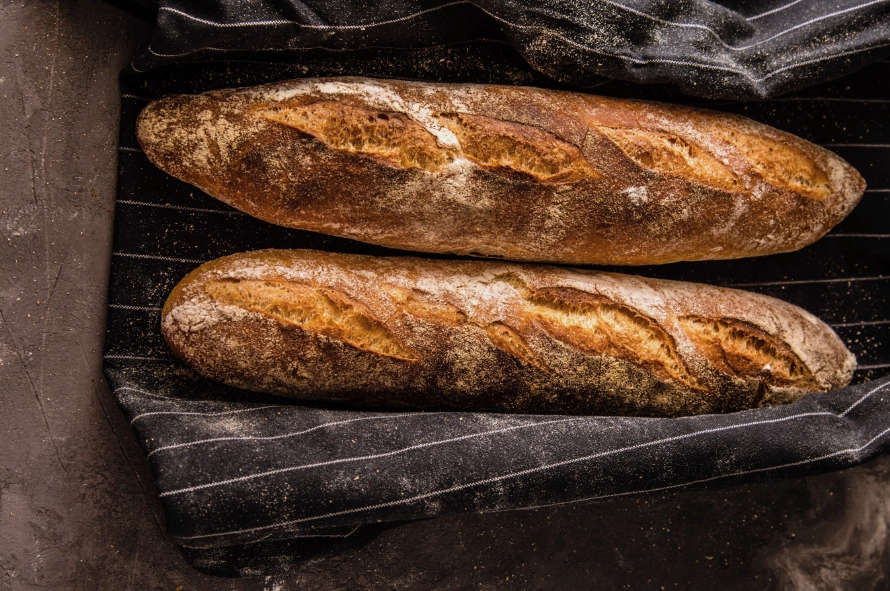
Where does the baguette come from?
The baguette’s backstory is like many French classics, a mix of myth and revolution:
Some claim its roots reach back to Napoleon’s army
One story goes that Napoleon demanded a bread soldiers could carry in their uniforms, leading bakers to create long, slender loaves that would slip into a coat pocket, practical, portable, and delicious.
Builders on the Paris Metro are sometimes credited
Another story tells that in the early 20th century, cross-neighbourhood construction meant knife fights broke out among rival teams. Knives were banned; bakers supplied loaves that could be torn, no blade required. The baguette as a peacekeeper, of sorts.
In 1920, regulations defined its identity
The word “baguette” first appeared officially in Parisian law in August 1920, specifying precise weights and prices. But, as with anything French, things were blurry before the rules. Long, baton-shaped breads aren’t new; breads resembling the baguette existed in France by the 18th century and gained their signature style with the arrival of Viennese baking techniques in the 19th. By 1920, the laws caught up with public taste, and the “baguette”, both in name and in code, was truly born.
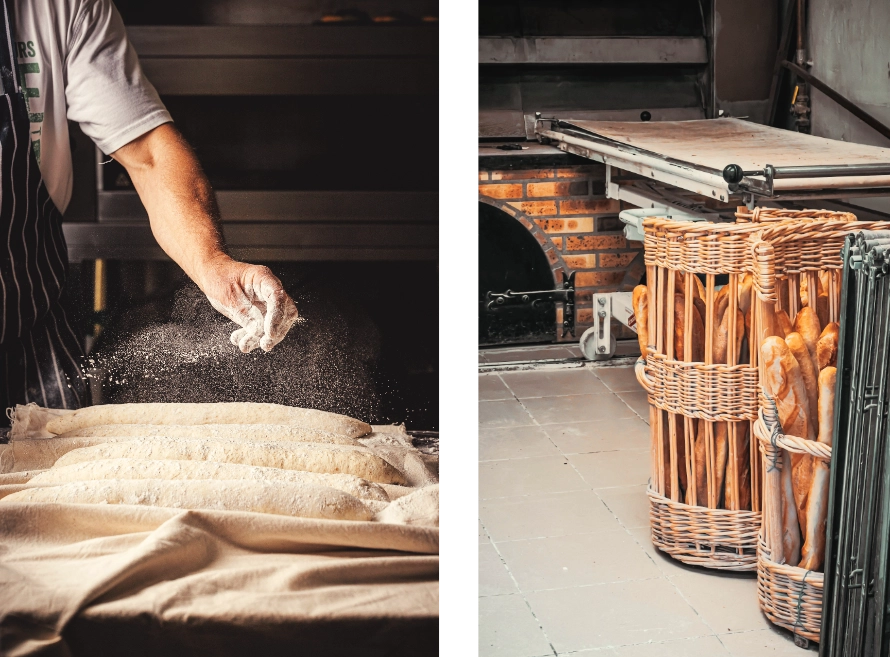
The law and how the French protect their daily bread
France’s love affair with the baguette runs deep. With trademark pride and attention to tradition, the French have gone so far as to codify their beloved loaf in law. You can’t just knead dough and call it a baguette, especially not a “Baguette Tradition”. In 1993, the introduction of the “Décret Pain” laid down strict, enforceable rules governing every aspect of the baguette’s creation, from the ingredients right through to the methods used in the bakery. This legal safeguard ensures that every authentic baguette tradition is a genuine expression of France’s artisanal heritage.
Baguette tradition vs. regular baguette

What are the physical requirements of a baguette?
It’s true, France doesn’t just regulate what’s in its baguettes, but also sets legal standards for their physical form. A classic move for a nation that holds bread in almost sacred regard. Here’s what matters if you want your loaf to officially strut its stuff as a real “baguette” in France:
Length
Traditionally between 55 and 65 centimetres, giving that iconic, baton-like shape ideal for tucking under your arm (or, let’s be honest, nibbling on your walk home).
Weight
Must tip the scales between 250 and 300 grams, a Goldilocks loaf, neither hefty nor insubstantial.
Crust
The exterior needs to promise (and deliver) that almost audible “crack” when squeezed, with a crisp finish that’s a must for the French table.
Crumb
Inside, you’re looking for an irregular, open texture, not too dense, and absolutely not crumbly or dry. This is the soft, airy heart that soaks up every last bit of soup or cheese.
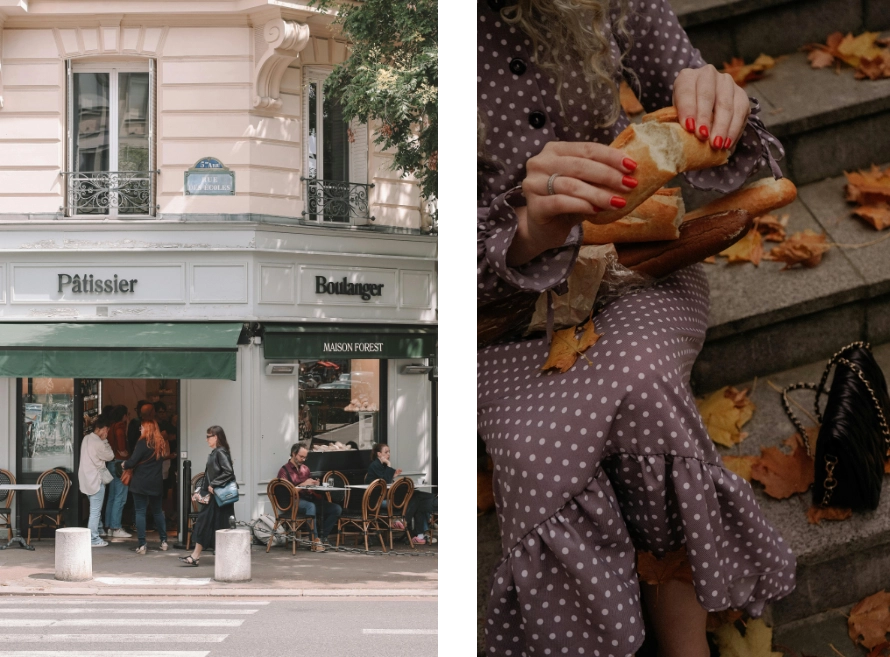
The name “Boulangerie” is also protected
On top of protecting the bread itself, bakeries have rules too before they can claim the name of bakery “boulangerie” in France. Not everyone can simply call their shop a “boulangerie” or open one without meeting specific criteria. The title is legally protected, reflecting how seriously the French regard their baking traditions.
Bakery requirements
To officially use the name “boulangerie” for a business in France, there are clear requirements:
- On-site production
All bread must be mixed, kneaded, shaped, leavened, and baked entirely on the premises. No part of the process can be outsourced or performed using pre-made, frozen dough. - No industrial shortcuts
The use of industrial methods, pre-baked, or frozen bread is prohibited if you want the “boulangerie” label.
These protections safeguard the know-how, authenticity, and employment tied to French baking. They ensure that when customers see “boulangerie” on a storefront, they’re guaranteed freshly-made, artisan-quality bread as part of France’s daily life and cultural heritage. French authorities do check and regulate the proper use of the title, protecting both consumers and artisanal bakers.
France’s annual quest for baguette perfection
If you think competition doesn’t belong with carbs, think again. Every year, Paris hosts the “Grand Prix de la Baguette,” where bakers vie for the title of best baguette in the city. The winner earns not just glory and a tidy sum, but a year supplying the Elysée Palace, the bread of presidents.
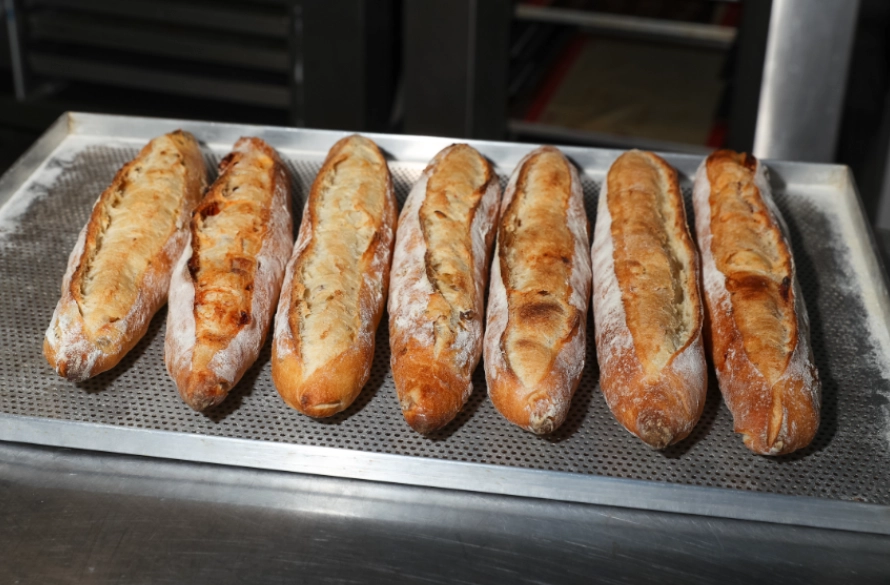
France’s never-ending love affair with the baguette
320 per sec
320 baguettes every second is how fast the bread is eaten and produced across France, 10 billion annually.

32,000
France hosts over 30,000 official boulangeries, more than the number of communes (towns) in the country.

1/2 per day
An average of half a baguette per person, per day is eaten by the French. It’s not a stereotype, it’s real.

70%
70% of all bread sold in France is the classic baguette, making it by far the nation’s favourite loaf.

UNESCO
“Baguette craftsmanship” earned a place on the UNESCO Representative List of the Intangible Cultural Heritage of Humanity.

Price
In 2024, a supermarket baguette costs as little as €0.29, while most artisanal versions are just under €1.
The baguette rituals and etiquettes
And at last, here are some rituals and etiquettes on how to manage your beloved baguette.
No slicing
Slicing with a bread knife is rare. Tearing pieces by hand is a mark of conviviality and trust.
The tip
The tip of the baguette (whether it’s called the quignon, croustet, or croûton depending on the region) is a delicacy, often nabbed straight away after purchasing the baguette and often arrives home without them.
Utensil
Bread is treated like a third hand or extra utensil at meals: used to push food onto the fork.
No bread plate
In most French homes and bistros, your piece of baguette simply sits on the table next to your plate, crumbs and all. A separate bread plate is rarely ever used for meals outside of very formal settings.
Small pieces
Tear off only what you intend to eat in one or two bites as a vehicle for your food. Using a full slice of baguette to make a sandwich with cheese or charcuterie at the meal table (like you might with a ploughman’s lunch in Britain) is considered a bit gauche.
Mopping
Cheese course
Freshness
Many French buy their baguette twice a day, one for breakfast and one for dinner. Freshness is everything. If you turn up to a gathering without a fresh loaf, people do notice!
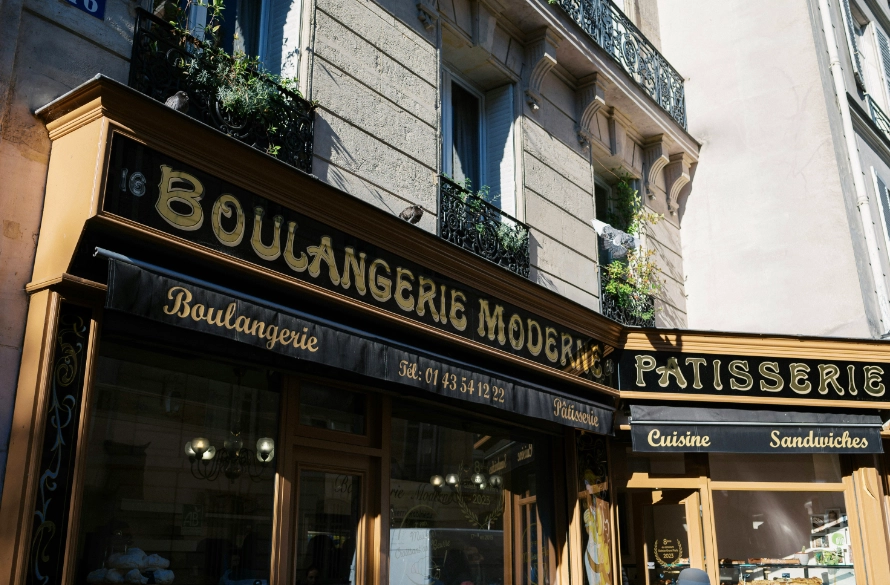
Final thoughts
The baguette is an unspoken social contract. For millions, picking up a baguette each day is as natural as breathing. Boulangeries open early, selling freshly baked sticks morning, noon, and night. Many will even sell you half a baguette if you’re worried about overheating your bread basket before supper. Nothing goes to waste, if it dries out, it gets dunked in soup or turned into pain perdu.
Now, I’d love to hear from you. Is there a topping or a pairing that makes you genuinely happy, whether it’s salty butter for breakfast, thick slices of Comté at lunch, or a cheeky swipe of chocolate for an afternoon pick-me-up? Maybe you’ve tried something utterly unconventional with a baguette, or perhaps there’s a bakery near you that’s an absolute hidden gem? Share your thoughts in the comments and let us know!

